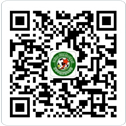You are here
Red and Yellow Cards
|
Being shown the card! Not content with blowing an all-powerful Acme Thunderer whistle, it was an English referee who first thought of using red and yellow cards.
Ken Aston was in charge of the referees at the 1966 World Cup. During England's stormy quarter-final against Argentina at Wembley, the visiting captain, Antonio Rattin, refused to leave the field after being sent off by the German referee, Rudolf Kreitlein.
Aston ran on to the pitch and, in his schoolboy Spanish, tried to persuade Rattin to depart so the game could continue. Driving away from the stadium later that day Aston began to ponder the problem of how referees could make their intentions clear to players without having to speak the same language. At that same moment he stopped at some traffic lights and saw the red, amber and green. And that's how the idea of using coloured cards was born.
Red and yellow cards were first used by FIFA referees during the 1970 World Cup in Mexico. Ironically, not one player was sent off throughout that entire tournament
Although the idea was born in England, red and yellow cards were not used in the English leagues until 1976. Even then, following complaints by players that referees were brandishing the cards too readily, their use was suspended between 1981 and 1987.
Interestingly, in hockey, the referees have three cards: green for a warning, yellow for temporary dismissal from the pitch, and red for a permanent sending off.
May 2001









